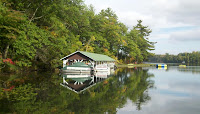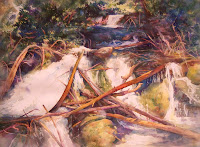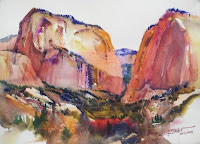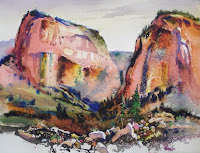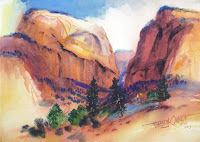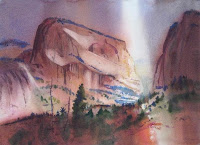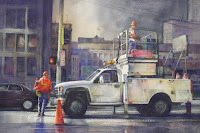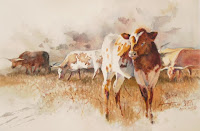 When painting realism, I believe that we should paint subjects as our eyes actually see them, not as a camera's lens captures them. Cameras are not selective in their focus and will put everything in the focal depth into sharp detail. A painting handled this way, while technically accurate, will lack emphasis and appear busy.
When painting realism, I believe that we should paint subjects as our eyes actually see them, not as a camera's lens captures them. Cameras are not selective in their focus and will put everything in the focal depth into sharp detail. A painting handled this way, while technically accurate, will lack emphasis and appear busy.Here's a way I've learned to correct this. Pick an object and stare at it without letting your gaze wander. Notice and remember how you see the neighboring objects. While we recognize what they are, they're less definite in their focus. This is how we should be painting. The center of interest should be in focus while the remaining objects are not.
I like to think of painting this way as building a bridge between the painting's borders and its center of interest, wherever that may be. I go for a steady transition from soft to high focus. Think of gradually sliding from low focus to sharp detail. A viewer should not perceive the change taking place. In my watercolor of long-horn cattle, I've used this concept to put the calf in focus and make it the center of interest. Best regards - Tom

